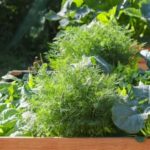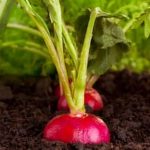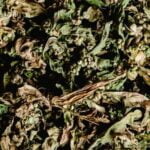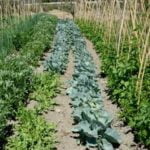Is peat moss ok in vegetable gardens? Peat moss is a popular choice for improving soil quality in gardening, and its use in vegetable gardens is a common practice. This article will delve into the benefits and considerations of using peat moss in vegetable gardens, as well as explore alternative options for improving soil.
Peat moss, also known as sphagnum peat, is a type of organic material that is widely used in gardening to enhance soil structure and water retention. Its ability to retain moisture makes it an ideal choice for plants, especially in areas where water conservation is important. Additionally, peat moss contains high levels of organic matter, making it beneficial for improving soil fertility.
One of the main benefits of using peat moss in vegetable gardens is its ability to improve soil structure and water retention. By adding peat moss to the soil, gardeners can increase the porosity and drainage capabilities of the soil, which allows for better root growth and nutrient absorption by plants. Moreover, peat moss can also help to maintain ideal moisture levels in the soil, reducing the risk of overwatering or underwatering plants.
Benefits of Peat Moss
Peat moss is a common material used in gardening due to its numerous benefits, especially when it comes to vegetable gardens. One of the key advantages of using peat moss is its ability to improve soil structure. It aids in breaking up heavy clay soils, allowing for better drainage and root growth. In addition, peat moss has excellent water retention properties, which can be particularly beneficial for vegetable gardens during hot and dry periods.
Soil Aeration
Another benefit of peat moss in vegetable gardens is its role in soil aeration. By adding peat moss to the soil, gardeners can improve air circulation and reduce compaction, creating an optimal environment for plant roots to thrive. This is especially important in raised bed gardens or areas with poor soil quality.
Acidic pH
Peat moss also tends to be slightly acidic, making it ideal for plants that require lower pH levels such as blueberries or potatoes. However, this characteristic should be considered when incorporating peat moss into vegetable gardens, as some crops may not thrive in overly acidic conditions. It’s important to monitor the pH level of the soil and adjust it accordingly if necessary.
Considerations for Vegetable Gardens
pH Levels and Peat Moss
One of the most important factors to consider when using peat moss in vegetable gardens is the impact it can have on soil pH levels. Peat moss is acidic in nature, which means it can lower the pH of the soil over time.
While this can be beneficial for acid-loving plants like blueberries and rhododendrons, it may not be ideal for all vegetable crops. It’s essential to test the pH of your soil before incorporating peat moss and monitor it regularly to ensure it remains within the optimal range for the vegetables you’re growing.
Potential Nutrient Limitations
Another consideration when using peat moss in vegetable gardens is its nutrient-holding capacity. While peat moss can help improve soil structure and water retention, it has a limited ability to hold onto nutrients.
This means that over time, as you water and fertilize your vegetable garden, nutrients may leach out of the peat moss more quickly than other organic matter. To mitigate this potential issue, consider supplementing with additional organic fertilizers or compost to ensure your vegetable plants have access to essential nutrients for healthy growth.
Using Peat Moss Responsibly
When incorporating peat moss into vegetable gardens, it’s crucial to do so responsibly. Opt for sustainably sourced peat moss or consider alternatives with a lower environmental impact. Additionally, while there are benefits to using peat moss in terms of improving soil structure and water retention, it should be used in conjunction with other organic matter to ensure a well-balanced growing environment for your vegetable crops.
By carefully considering pH levels, potential nutrient limitations, and responsible usage, gardeners can make informed decisions about whether or not to use peat moss in their vegetable gardens. With proper management and attention to these specific factors, peat moss can still be a valuable addition to enhance soil quality and support healthy plant growth.
Alternatives to Peat Moss
Peat moss has long been a popular choice for improving soil in vegetable gardens, but there are other alternatives worth considering. Compost, for example, is a fantastic option for enhancing soil fertility and structure. It provides a rich source of organic matter, micronutrients, and beneficial microorganisms that can improve overall soil health. Additionally, compost can help retain moisture and suppress diseases when added to garden beds.
Coconut coir is another alternative to peat moss that has gained popularity in recent years. This natural fiber comes from the husk of coconuts and is an excellent substitute due to its water retention capabilities and high lignin content. Like peat moss, coconut coir also helps aerate the soil and promotes root growth. Furthermore, it is a renewable resource that doesn’t have the same environmental concerns associated with peat moss extraction.
Other organic matter, such as well-aged manure or leaf mold, can also be used to enhance vegetable garden soil. These materials offer valuable nutrients and biological activity that contribute to improved plant growth and yield. When compared to peat moss, these alternatives provide similar benefits without the same potential environmental impact. Considering the variety of options available, it’s essential for gardeners to weigh these factors when deciding how to best support their vegetable gardens.
| Option | Benefits |
|---|---|
| Compost | Enhances soil fertility and structure; rich source of organic matter, micronutrients, and beneficial microorganisms; helps retain moisture and suppress diseases. |
| Coconut Coir | Excellent water retention capabilities; high lignin content; promotes root growth; renewable resource with minimal environmental concerns. |
| Other Organic Matter (manure/leaf mold) | Provides valuable nutrients and biological activity; contributes to improved plant growth and yield; minimal environmental impact compared to peat moss. |
Environmental Impact
Peat moss, while being a widely popular choice for improving soil structure and water retention in vegetable gardens, also comes with potential environmental consequences. One of the main concerns is the extraction process of peat moss, which involves the removal of peat from natural wetland habitats.
This process disrupts the delicate balance of these ecosystems, leading to habitat loss and disturbance for various plant and animal species. Moreover, the extensive harvesting of peat moss can contribute to the release of carbon dioxide into the atmosphere, further exacerbating climate change.
It is estimated that peatlands store approximately 550 gigatons of carbon globally, which is more than all other vegetation types combined. When peat moss is extracted and dried for commercial use, this stored carbon is released into the atmosphere as carbon dioxide, significantly contributing to greenhouse gas emissions. Additionally, the drainage of peatlands for peat moss extraction leads to increased oxidation of peat soils, resulting in even greater carbon emissions.
Considering these environmental impacts, many gardeners are exploring alternative options for improving soil in vegetable gardens. For instance, compost made from kitchen scraps and yard waste not only enriches soil but also helps reduce waste that would otherwise end up in landfills. Coconut coir and other organic matter are also effective alternatives that do not have the same negative environmental implications as peat moss.
Ultimately, it’s important for gardeners to understand the potential environmental consequences associated with using peat moss in order to make informed decisions about their gardening practices and its impact on the environment at large.
| Environmental Consequences | Impact |
|---|---|
| Habitat loss due to extraction process | Disruption of natural ecosystems |
| Carbon footprint | Release of stored carbon into atmosphere |
| Alternative options | Compost, coconut coir, other organic matter |
Tips for Using Peat Moss
Peat moss is a popular choice for improving soil in vegetable gardens due to its ability to enhance soil structure and water retention. However, using peat moss effectively requires proper knowledge and technique. Here are some practical tips for using peat moss in vegetable gardens:
- Soil Preparation: Before incorporating peat moss into the soil, it’s essential to prepare the ground properly. Remove any weeds or debris and till the soil to loosen it up.
- Incorporation: When adding peat moss to the soil, ensure that it is thoroughly mixed in. Aim for an even distribution throughout the garden bed to maximize its benefits.
- Timing: Peat moss can be used as part of initial soil preparation or as an amendment during the growing season. It’s important to consider when and how often to use peat moss based on the specific needs of your vegetables.
In addition, it’s crucial to consider factors such as pH levels and potential nutrient limitations when using peat moss in vegetable gardens. Testing the pH of the soil and monitoring nutrient levels can help determine if additional amendments are necessary for optimal plant growth.
Overall, proper use of peat moss can lead to healthier plants and improved yields in vegetable gardens. By following these practical tips, gardeners can make the most of this popular soil amendment while promoting successful vegetable growth.
Case Studies
Peat moss is a popular choice for improving soil quality in vegetable gardens, and many gardeners have successfully incorporated it into their gardening practices. Here are some real-life examples of vegetable gardens that have benefited from the use of peat moss:
- Case Study 1: The Smith Family Garden
- Case Study 2: Urban Community Garden
- Case Study 3: Organic Farming Operation
The Smith family had been struggling with poor soil quality in their vegetable garden for years. After consulting with a gardening expert, they decided to incorporate peat moss into their garden beds. The results were remarkable – the soil structure improved significantly, allowing for better drainage and root growth. As a result, the Smiths saw a noticeable increase in the yield and quality of their vegetables.
An urban community garden in a densely populated area faced challenges with compacted and nutrient-deficient soil. With the addition of peat moss to the garden beds, the community members observed increased water retention and improved nutrient uptake by the vegetable plants. This led to healthier and more abundant harvests, benefitting not only the individual gardeners but also the surrounding community.
An organic farming operation integrated peat moss into their vegetable fields as part of their commitment to sustainable and environmentally friendly practices. By using peat moss, they were able to enhance soil structure while reducing the need for synthetic fertilizers and irrigation. As a result, they achieved higher yields of high-quality produce while minimizing their environmental impact.
These case studies demonstrate that when used judiciously and in combination with other organic practices, peat moss can be a valuable asset in vegetable gardens, leading to improved soil quality and bountiful harvests. It is important to note that successful utilization of peat moss depends on various factors such as climate, existing soil conditions, and other complementary amendments used in conjunction with it.
Conclusion
In conclusion, the use of peat moss in vegetable gardens has both benefits and drawbacks that gardeners should carefully consider. While peat moss improves soil structure and water retention, it may also affect pH levels and potentially limit nutrient availability for vegetables. It is important for gardeners to weigh these factors and consider alternatives such as compost and coconut coir to improve soil health while minimizing the environmental impact of peat moss extraction.
Gardeners should also take into account the environmental consequences of using peat moss, including its carbon footprint and devastation of natural habitats during extraction. As an alternative, utilizing compost, coconut coir, or other organic matter not only benefits the soil but also reduces the ecological impact associated with peat moss use. Additionally, incorporating sustainable gardening practices such as mulching and crop rotation can further enhance the health and fertility of vegetable gardens without relying on peat moss.
Ultimately, while peat moss has been a popular choice for improving soil in vegetable gardens, its drawbacks must be carefully considered. Gardeners should explore alternative options to meet the needs of their plants while minimizing their environmental impact. By making informed decisions about soil amendments and adopting sustainable gardening practices, gardeners can create thriving vegetable gardens without relying solely on peat moss.
Frequently Asked Questions
Should I Put Peat Moss in My Vegetable Garden?
Adding peat moss to your vegetable garden can be beneficial, as it helps improve soil structure, retains moisture, and enhances aeration. However, it is important to consider the pH level of your soil, as peat moss tends to be acidic.
If your vegetables prefer a more alkaline soil, adding peat moss may not be the best option unless balanced out with other amendments.
Do Peppers Like Peat Moss?
Peppers generally thrive in well-draining soil with good moisture retention – qualities that peat moss can provide. Its ability to maintain consistent moisture levels and promote root development can benefit pepper plants. However, it’s important to ensure that the overall pH level of the soil is suitable for peppers when using peat moss.
Do Green Beans Like Peat Moss?
Green beans are known for their preference for well-drained soil and consistent moisture, both of which can be provided by adding peat moss to the garden. Its ability to enhance water retention while permitting proper aeration makes it a suitable amendment for green bean plants.
Just like with other plants, monitoring the pH level is crucial when incorporating peat moss into the soil for green beans.

If you’re looking to get into vegetable gardening, or are just looking for some tips on how to make your current garden better, then you’ve come to the right place! My name is Ethel and I have been gardening for years. In this blog, I’m going to share with you some of my best tips on how to create a successful vegetable garden.





